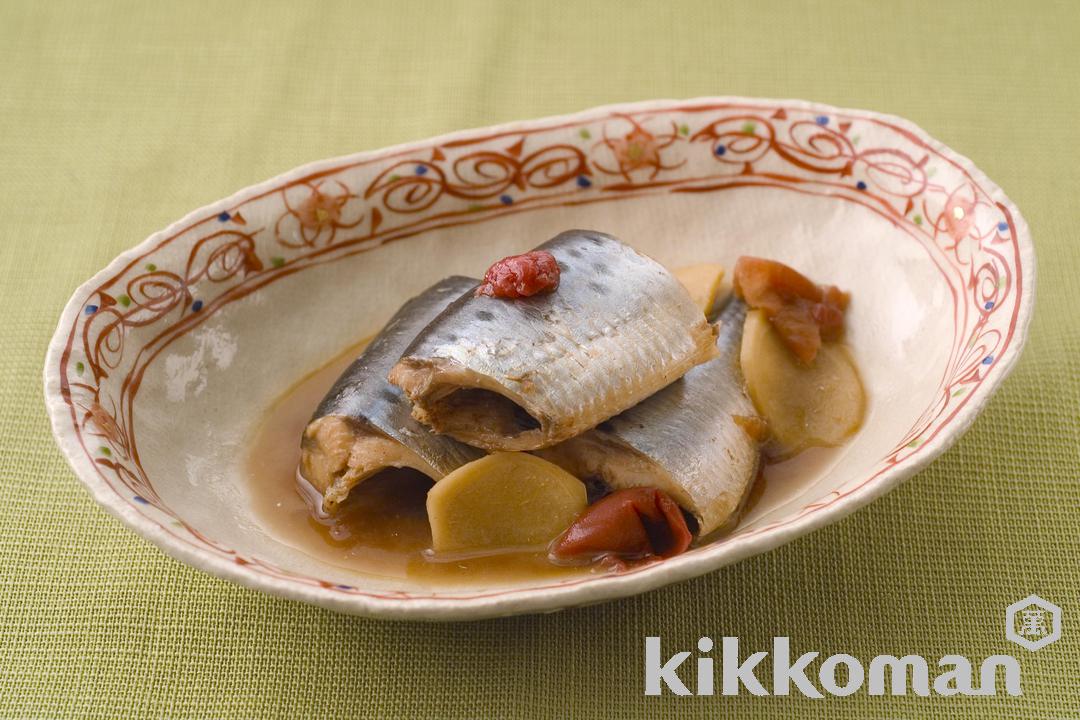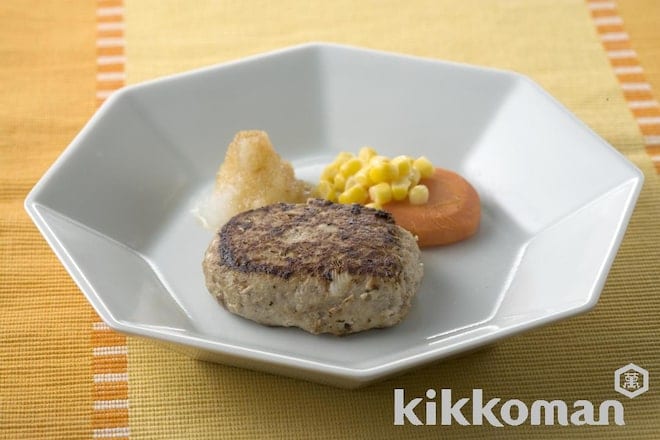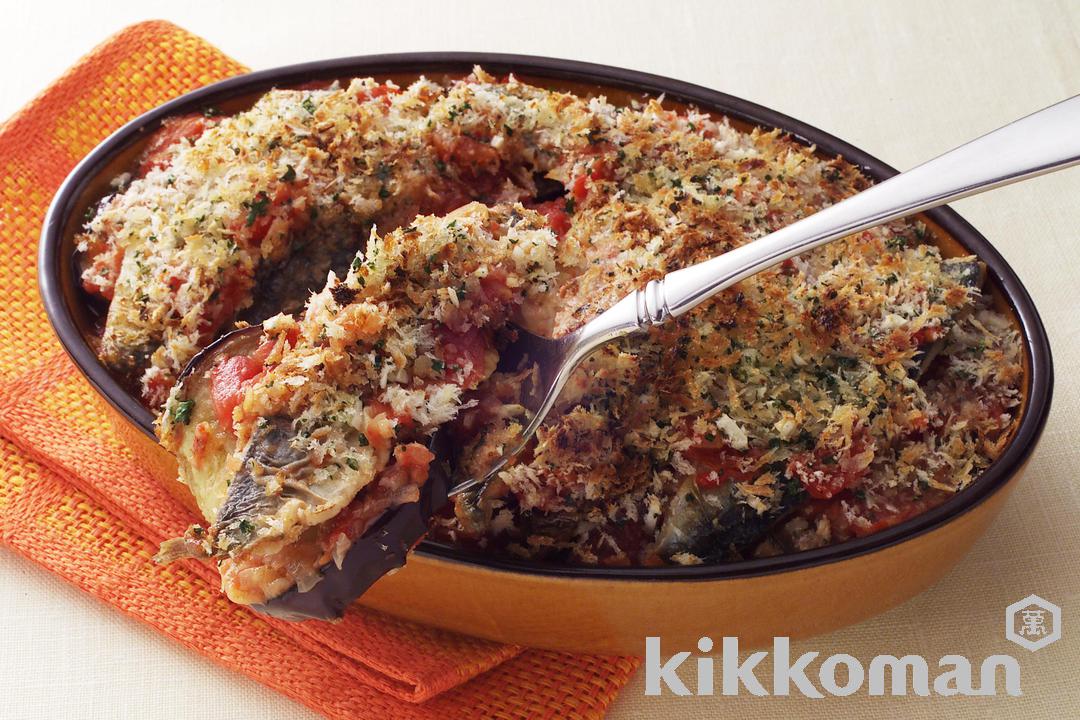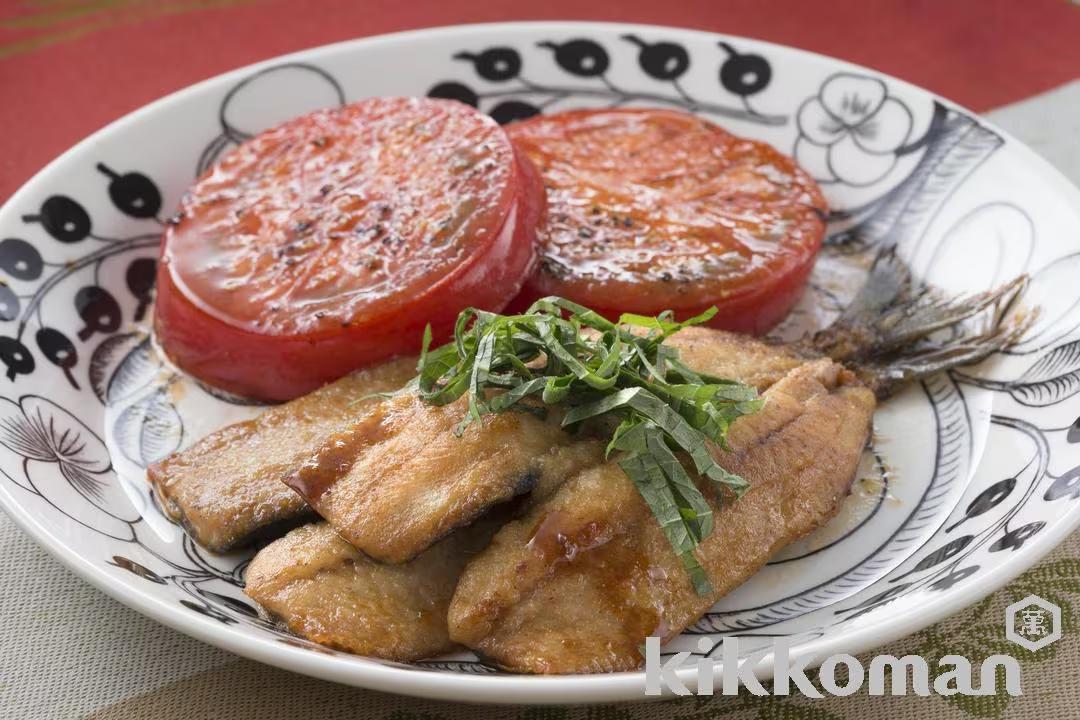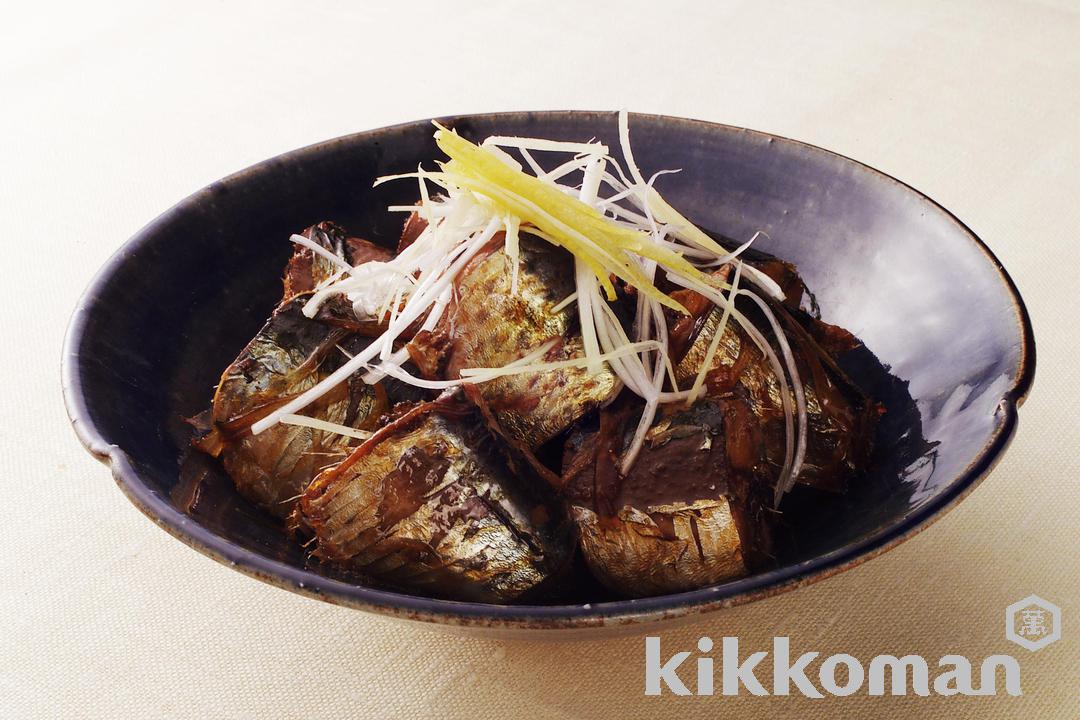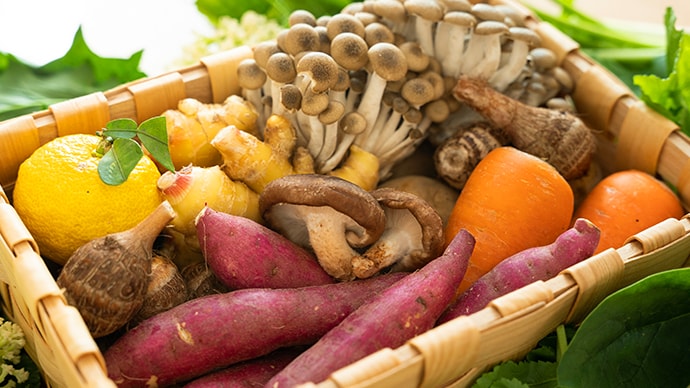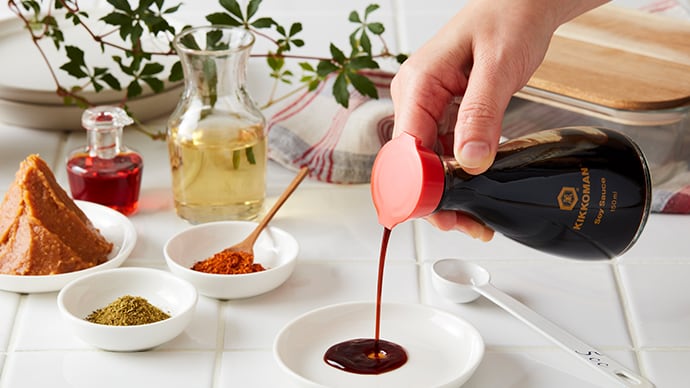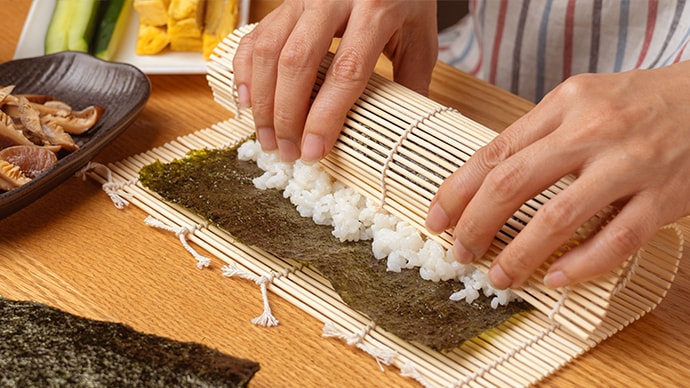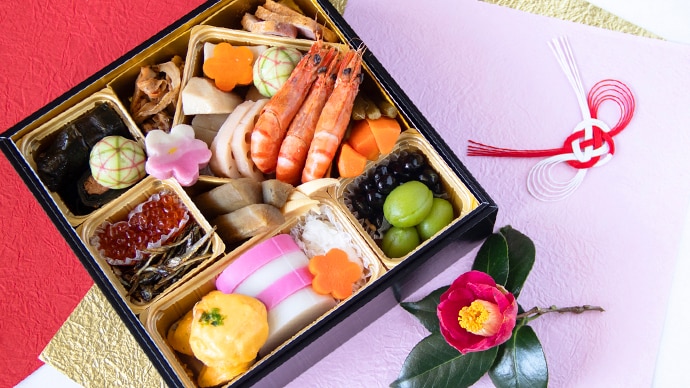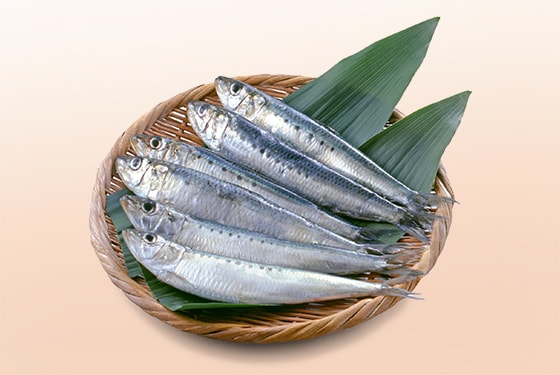
A blueback fish used in many preserved dishes such as dried and canned fish
What are sardines?
Sardines, or iwashi (いわし in Japanese), are small blueback fish caught all around Japan, and have a long culinary history in the country. Today, the maiwashi, or the Japanese sardine, is most commonly used. They are eaten in various ways such as sashimi, simmered fish, meatballs, and fried fish. Dried sardines called "mezashi" as well as canned sardines are also popular. Processed young sardine fish can be eaten as shirasu (semi-dried young sardines) and chirimenjako (dried young sardines).
Nutrition facts
Sardines are rich in protein, vitamin D, vitamin B12, calcium, iron, and selenium, and help in maintaining bone health, producing blood, and improving immunity. They also contain unsaturated fatty acids such as DHA and EPA, which support brain and nerve function, have anti-inflammatory effects, and contribute to preventing blood clots. Furthermore, sardine's vitamin D content supports calcium absorption and improves immunity, while it's vitamin B12 content maintains nerve and blood health. These fish also contain selenium which has antioxidant properties and is effective in protecting cells.
A good way to cook calcium-rich sardines is to eat them with the bones. Boiling them in vinegar softens the bones and increases calcium absorption. In addition, combining sardines with ingredients that contain vitamin C, such as grated daikon radish, promotes iron absorption.
Storage to prevent food loss
Sardines contain a lot of blood and spoil easily, so upon purchasing them, remove the internal organs, wash the fish well, and wrap them in plastic wrap before storing. They will last for about 2 days in the refrigerator and up to 2 weeks in the freezer.
Trivia
Sardines have soft flesh, so when removing the internal organs, they are prepared by way of "hand opening" technique. This process involves removing the innards and head, rinsing the fish thoroughly with water, then inserting your thumb between the bone and flesh and rubbing your finger alongside the bone to separate the flesh from the bone.
Cooking Basics
1. Remove scales (de-scale)
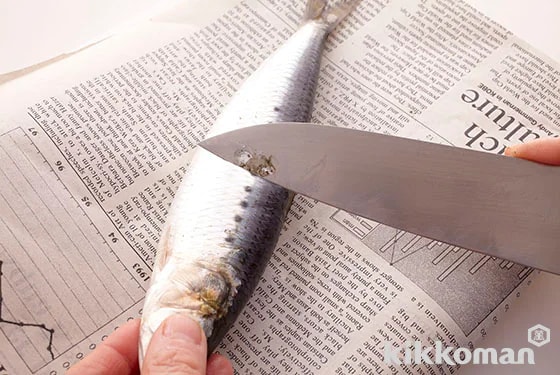
Move the tip of the knife from the tail towards the head to scrape off the scales.
2. Chop off the head
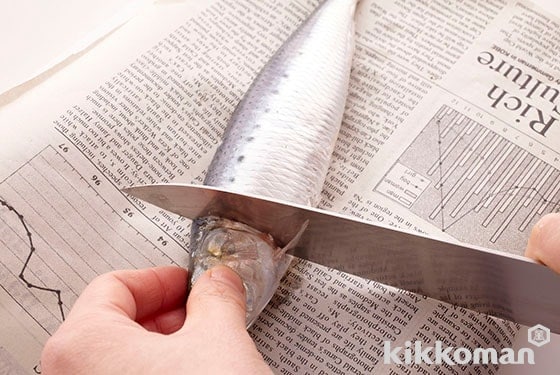
Place the knife at the base of the pectoral fin and chop off the head in one motion.
3. Remove the innards
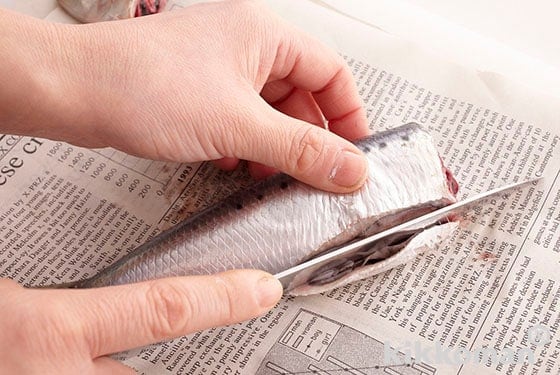
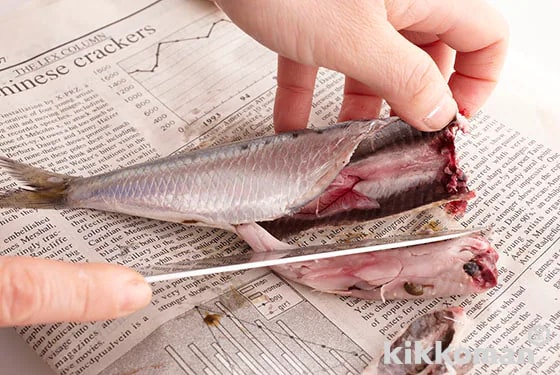
Cut away the edge of the belly from the head to the anal fin with a knife. Open the belly and use the knife to scrape out the innards.
4. Split open with hands
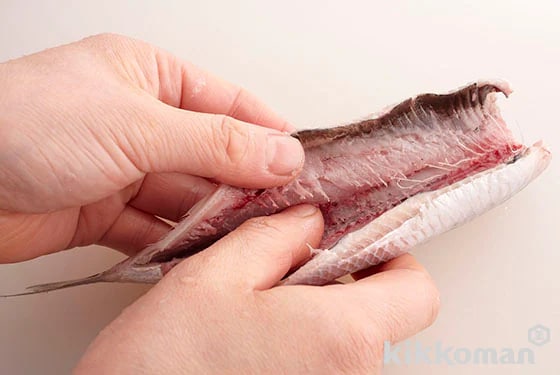
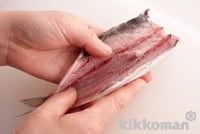
At this point, wrap the innards up in a newspaper, throw these away and rinse the sardine with water and then pat dry to remove excess moisture. Put your thumb inside the cut near to the top of the backbone, then slide this down towards the tail to split open.
5. Remove the backbone
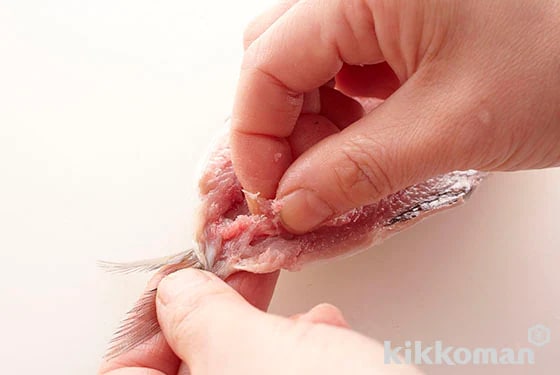
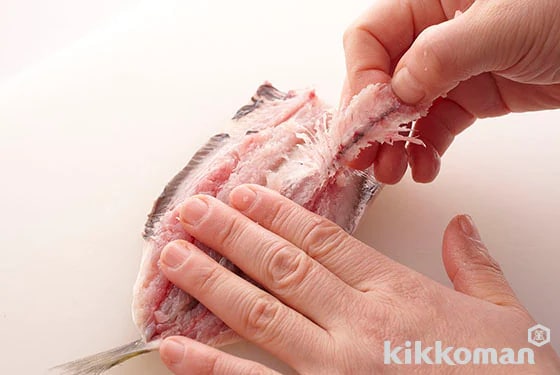
Use your fingers to fold the end of the backbone near the tail, then carefully pull out the bone in the same direction.
6. Remove the stomach bones
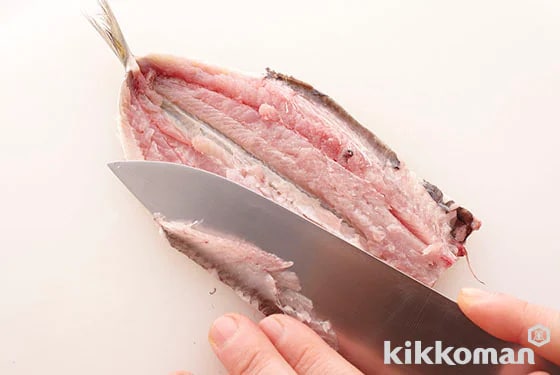
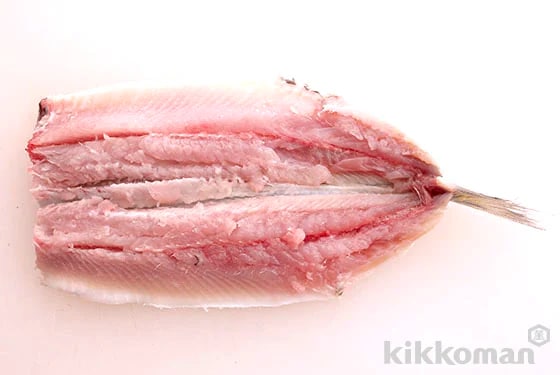
Lay the knife flat and slice away the stomach bones. This completes the butterflying process.
Related Recipes
30min
166kcal
1063mg
20min
152kcal
600mg
20min+
250kcal
512mg
20min
296kcal
433mg
20min
175kcal
315mg


